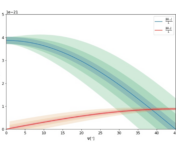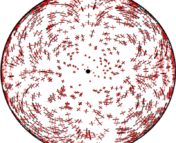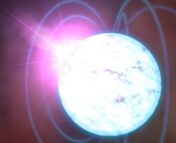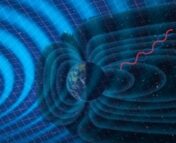Title: Detection of magnetic galactic binaries in quasicircular orbit with LISA
Authors: Etienne Savalle, Adrien Bourgoin, Christophe Le Poncin-Lafitte, Stéphane Mathis, Marie-Christine Angonin, Christopher Aykroyd
First Author’s Institution: Département de Physique des Particules, CEA/IRFU, CNRS/INSU, Université Paris-Saclay, Université de Paris.
Status: Published in Physical Review D [closed access]
This bite was written and published as part of Astrobites’s new partnership with the American Physical Society (APS). As part of this partnership, we cover selected articles from the Physical Review Journals, APS’s premier publications covering all aspects of physics. For more coverage as part of this partnership, see our other PRJ posts.
Gravitational waves, the ripples in the fabric of spacetime predicted by Einstein’s theory of general relativity, have opened a new window into the universe. These waves, coming from the most extreme events in the universe, carry invaluable information about their sources. Among the fascinating objects that produce gravitational waves are magnetic galactic binaries – pairs of white dwarfs or neutron stars co-orbiting within the Milky Way – that possess strong magnetic fields. The upcoming Laser Interferometer Space Antenna (LISA, see Figure 1) mission, a joint endeavor by NASA and ESA targeted to launch mid-2030, will provide an unprecedented opportunity to study magnetic galactic binaries. Today’s paper provides a comprehensive theoretical framework for decoding the information about magnetic fields from the gravitational wave signals of these binaries, which could shed light on the (currently unknown!) origin of magnetic fields in degenerate stars (white dwarfs and neutron stars).
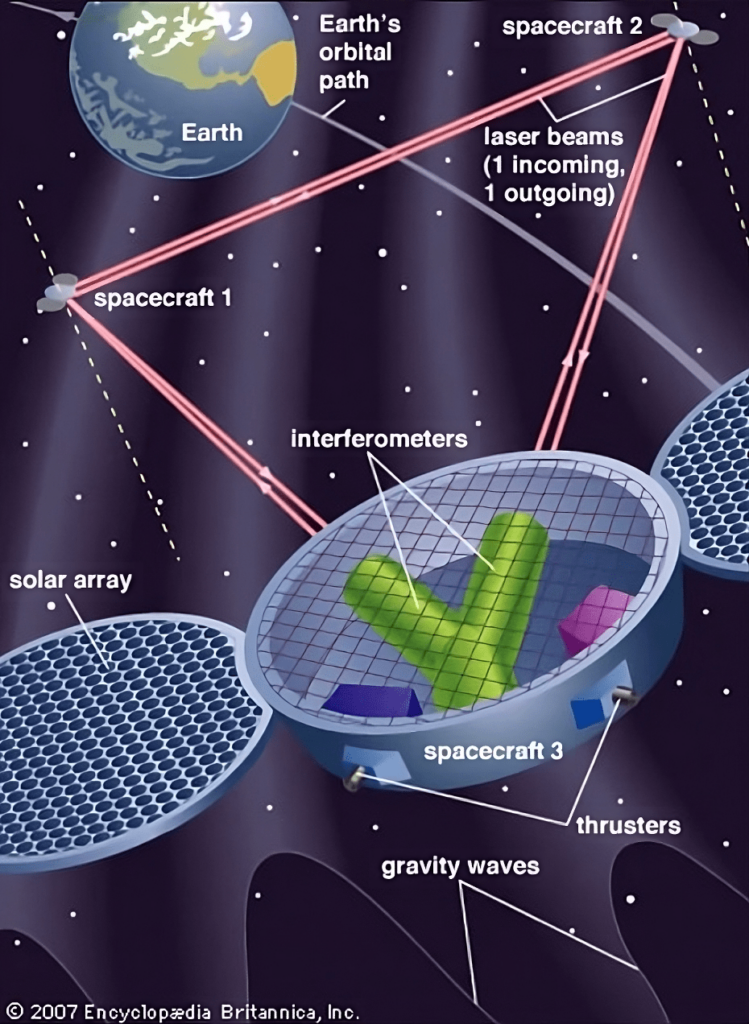
Magnetic Fields in Binary Systems
Magnetic fields play a crucial role in various astrophysical phenomena, from the formation and evolution of stars to the powering of some of the most energetic events in the universe, such as gamma-ray bursts and jets from supermassive black holes. However, our understanding of magnetic fields in these extreme environments is still limited.
White dwarfs and neutron stars are among the most magnetic astrophysical objects in the universe. When these stars are part of a close binary system, they can emit gravitational waves. As these waves carry energy away from the system, their orbits gradually shrink, causing the stars to move closer together. This process also tends to make the orbit more circular over time. Crucially, the magnetic interaction between the stars causes a characteristic shift in the frequencies of the gravitational wave signal compared to non-magnetic binary systems. This frequency shift is directly proportional to the strength of the magnetic fields and their orientation relative to the orbital plane.
Extracting Magnetic Field Information from LISA’s Signals
In today’s paper, the authors presented compelling evidence that the LISA mission, with its current data-processing pipeline, LISA Data Challenges (LDC), is capable of extracting magnetic field information from the gravitational wave signals emitted by magnetic galactic binaries. They derived a simplified procedure for determining the magnetic information of the binary system based on measurements of the main frequency and second harmonic of the gravitational wave signal.
Gravitational wave signals have characteristic frequencies associated with them. The main frequency of the signal corresponds to the orbital motion of the binary system. In non-linear systems, additional frequencies can be produced. The second harmonic, which is twice the main frequency, arises from non-linear effects in the gravitational wave emission process, such as the objects’ masses, velocities, and the spacetime curvature near the binary system. Therefore, by analyzing these frequencies, the frequency shifts (that are proportional to the magnetic field strength) can be determined.
To then demonstrate the feasibility of this approach, the authors simulated the gravitational waveform for a realistic magnetic binary system, HM Cancri, using the derived theoretical framework. HM Cancri consists of two massive white dwarfs with extremely strong magnetic fields orbiting each other at a frequency that is well within LISA’s detection band.
Study shows that the presence of even a slight eccentricity (deviation from a perfectly circular orbit) in the binary system can reveal additional information encoded in the gravitational wave signal. The amplitudes and frequencies of higher-order harmonics in the signal are sensitive to the eccentricity and the magnetic field strengths, providing a powerful tool for probing these properties. With an eccentricity around 0.1 (where eccentricity of a circular orbit is 0), HM Cancri system is a promising source for detecting multiple harmonics in the gravitational wave signal.
They then performed two analyses – an “optimistic” case assuming perfect knowledge of the system’s orientation, and a more “realistic” case without such prior information. Even in the realistic scenario, they could reasonably constrain parameters like masses, orbital elements and magnetic strengths by independently analyzing the main harmonic and second harmonic of the gravitational wave signal. This detailed simulation showcased the feasibility of detecting and characterizing magnetic binary systems like HM Cancri using LISA.
Today’s paper demonstrates that decoding the gravitational wave signals from magnetic binary stars offers unprecedented insights into the behavior of magnetic fields in these extreme environments. This sets a promising path for future gravitational wave astronomy with LISA. Such insights can shed light on the fundamental processes that govern the generation and evolution of magnetic fields in astrophysical objects, thus advancing our understanding of one of the universe’s most enigmatic phenomena.
Astrobite edited by Catherine Slaughter
Featured image credit: LISA Data Challenge

